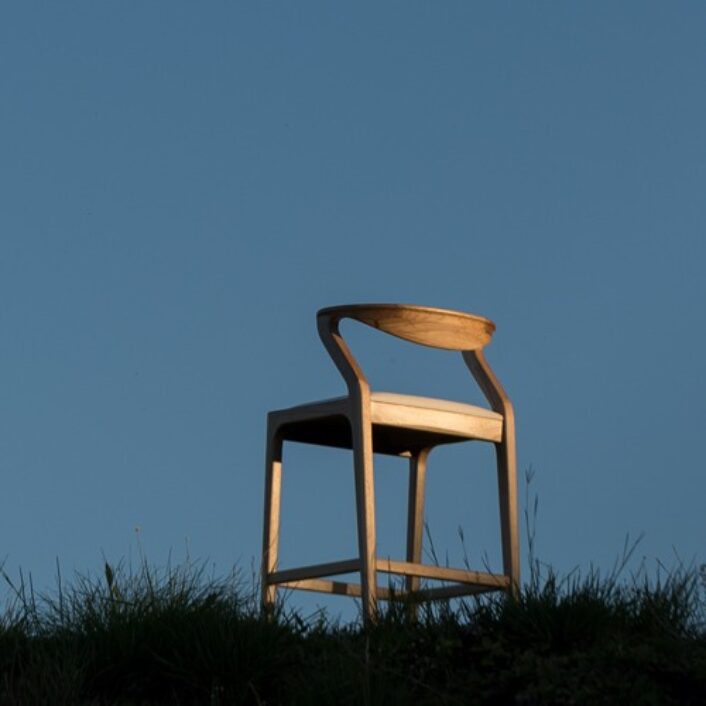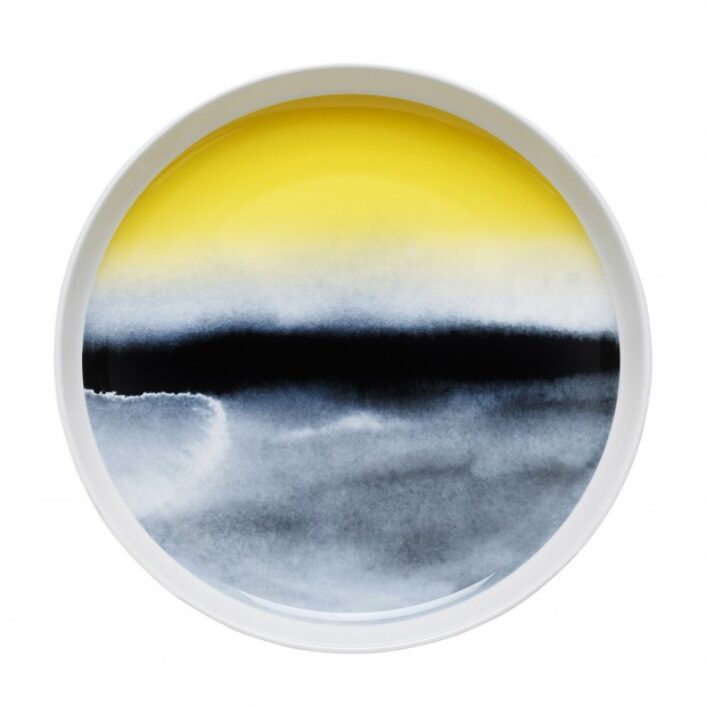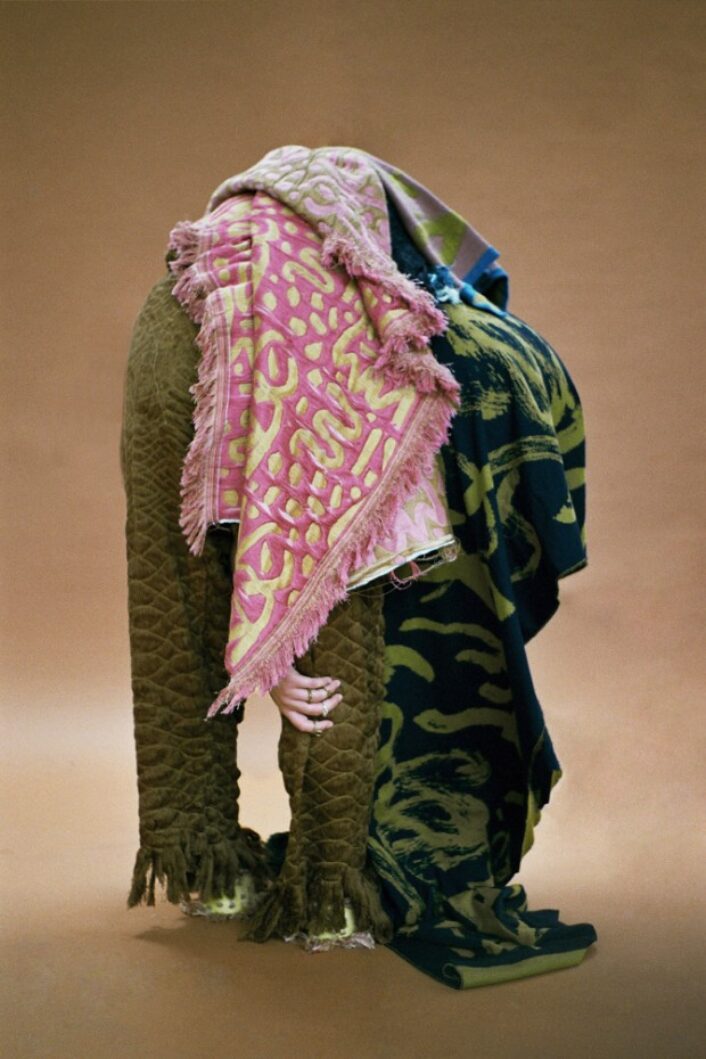Design
STACKABL is both whimsical and environmentally-friendly
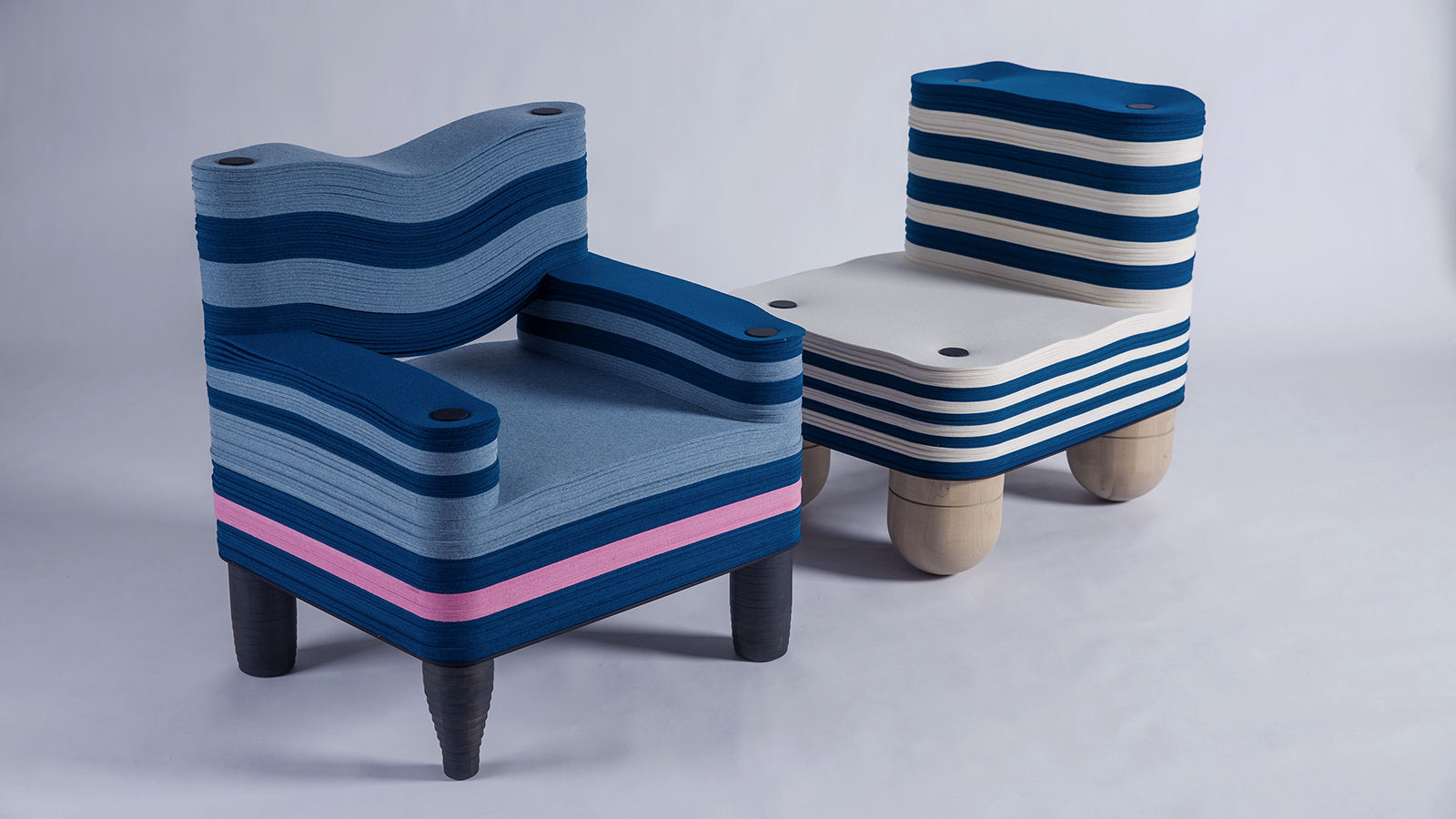
The collection first debuted at Salon Art + Design fair in November 2021.
Image courtesy of: Azure
Since its inception, STACKABL has been a creative advocacy for environmental consciousness and sustainability. The line of colorful, eco-friendly seating is the brainchild of Jeffrey Forrest, the young founder of STACKLAB, a multidisciplinary design studio that (courtesy of 1st Dibs), “is taking upcycling to a level above the next level.”
The inaugural STACKABL collection launched in 2021, in collaboration with Maison Gerard, the furniture gallery established in 1974 by Gerardus A. Widdershoven; the gallery has the reputation as New York City’s premier source for French Art Deco furniture, lighting, and accessories. The creative collaboration is available exclusively through Maison Gerard on 1st Dibs… further cementing its exclusivity and uniqueness.
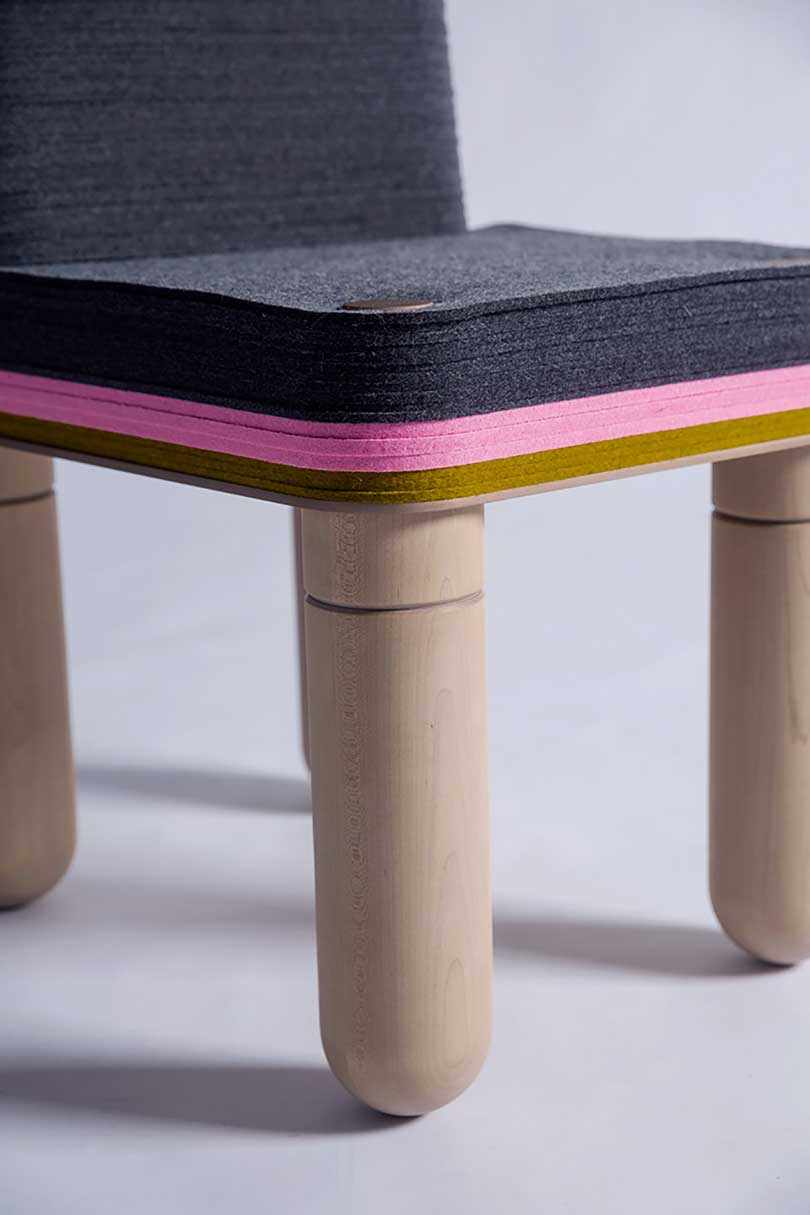
Dulces Dining Chair by Laura Kirk Design.
Image courtesy of: Design Milk
What sets STACKABL (courtesy of 1st Dibs) “apart from other efforts to create sustainable furniture is the algorithm that Forrest developed to identify remnants available from local manufacturers.” Forrest, an architecture major at New York Institute of Technology and the University of Calgary, says that he was tired of designers designing something and only then, figuring out what to make it out of. He wanted to design “in reverse.” Essentially, Forrest hopes to create an environment where “we reduce waste and start the design process by understanding what materials are readily available and figuring out what is responsible and practical to make that can also power our local economies.”
In essence, STACKABL acts as the middleman between manufacturers and consumers… all while tapping into a supplier’s inventory to address demands on a “case-by-case basis.” Starting with “what’s available for me,” designers can create pieces with materials that would otherwise be discarded.
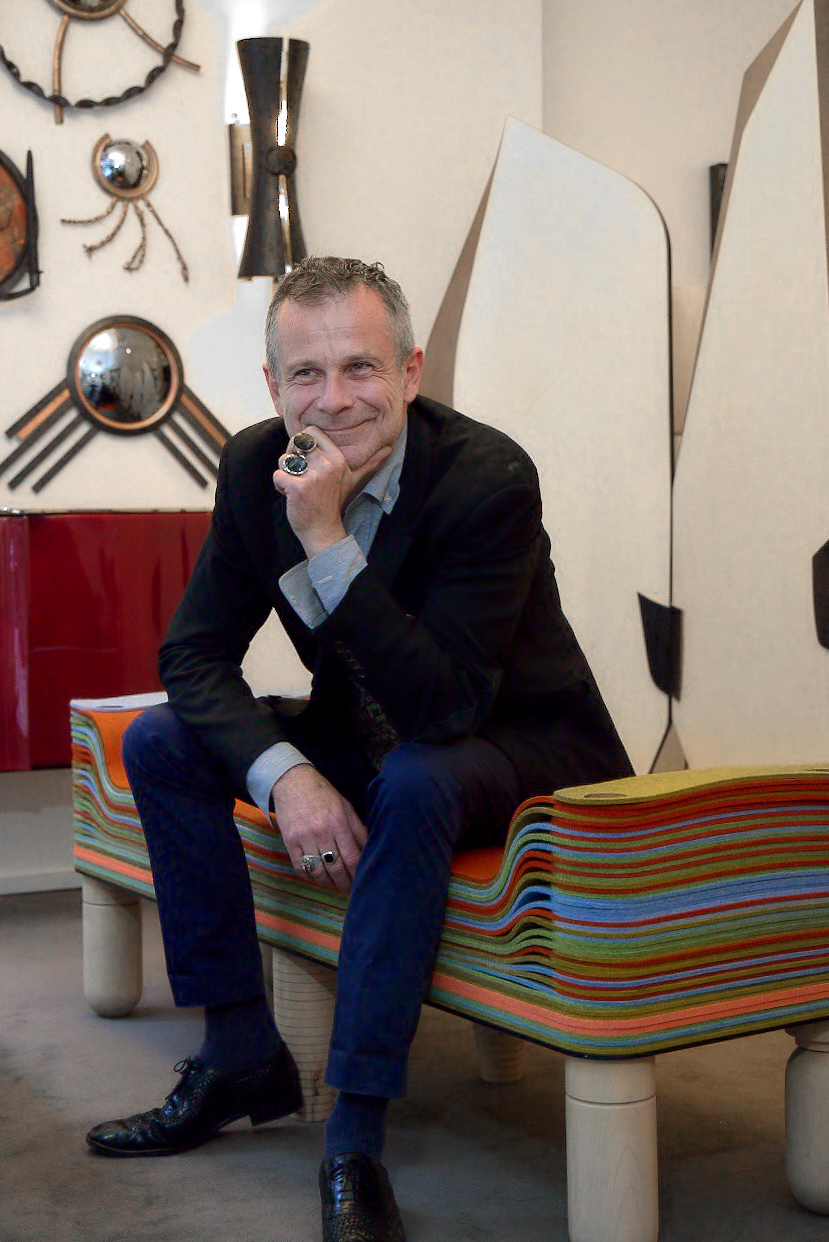
Benoist F. Drut, Maison Gerard’s owner, sits on a Maxine bench. The bench is Drut’s design, named for his dog. About his design, Drut told 1st Dibs “My first love was eighteenth-century French design, where the legs of benches are symmetrically identical. But here, I used three different shaped legs to show how to be funky within boundaries.”
Image courtesy of: Ist Dibs, photographed by: Aydin Arjomand
Working with Maison Gerard’s owner Benoist F. Drut, Forrest commissioned six pieces from the interior designer; each of the pieces is available in a number of variations and with different dimensions. Drut himself commissioned a design in order to show that sustainability is indeed possible and beautiful.
For customers, selecting the design is the first part; from there, a web interface that resembles a video game allows shoppers to customize their creation and get immediate quotes that reflect real-time availability. As soon as the “submit” button is pressed, the matched warehouse receives instructions regarding the material needed and the dimensions required.
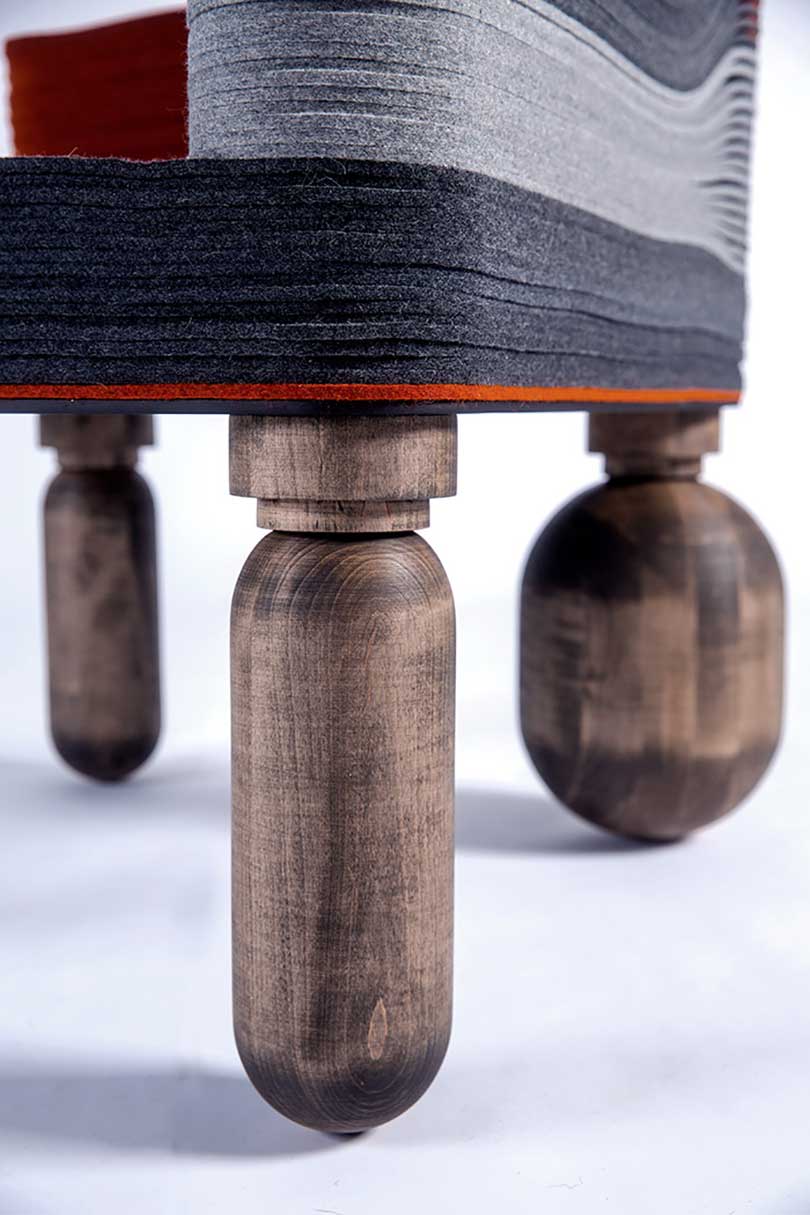
Alexandra Champalimaud’s Raki Corner Chair. Drut specifically loved this piece; he said “I love the asymmetry of Alexandra’s design. The shape was inspired by a chair, but the proportion is much more generous, and there’s a regal aspect to it.”
Image courtesy of: Design Milk
Each piece is made from hundreds of layers of felt. For the right amount of rigidness, several sheets of PET are mixed in. The stack of surplus merino-wool felt is adhered with repurposed aluminum bolts and supported by wooden legs that are sustainably harvested wood (all coming from within 150 miles of STACKABL’s Toronto headquarters) .
Using material “offcuts” that would otherwise go unused, the firm’s concept is rooted in sustainability. In addition to the obvious reasons to upcycle, offcuts take up a lot of valuable storage space… oftentimes, disposing of the materials costs more than actually giving them away. As evidence, Forrest says (courtesy of Azure) “If locally made goods have a hope in hell of competing with overseas manufacturing, it’s by paying less for our raw materials.”
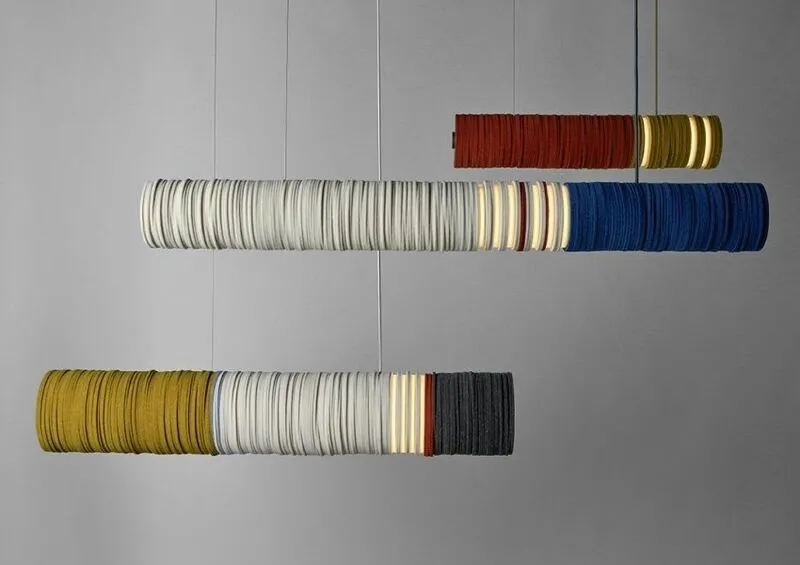
Lighting from the STACKABL x Maison Gerard Collaboration, all designed by the New York City-based Sarah Coleman. The illuminators are made from up cycled felt and aluminum and employ LED bulbs. From top to bottom: Shotgun Shell, Pregnancy Test, Cigarette.
Image courtesy of: Trendhunter
With the success and excitement of the furniture line, last year STACKABL launched a collection of pendant lighting. Currently, there are three collections available, each with a distinct style. The first collection to launch was a collaboration with Maison Gerard; STACKABL x Maison Gerard was created by Anthony Frank Keeler Design Studio, Sarah Coleman, and Wisse Trooster. The second collaboration was with Mindy Solomon; her collection was a nod to America’s design ethos in the earlier parts of the 21st-century. Specifically, the (courtesy of STACKABL) “bold geometries, sun-saturated colours, and linear details – all which Miami Beach fully embraced.” The latest pendant collection was the Arcilla, available in clusters and individually; this collection was inspired by a trip Forrest took to southwest Texas. Forrest said that seeing work by Louis Kahn and Donal Judd, in addition to some of his other art and architecture heroes, informed the earthy palette as it mimics the beautiful landscape he passed though.
Surely there is more in the pipeline for STACKABL; currently, STACKLAB is working on a “ready-made” version of the site which will offer a limited group of offerings at lower prices. Forrest conceived the idea of STACKABL during the pandemic, he truly believes that design should be a sub-function of what is currently going on. He told 1st Dibs, “In lockdown, we all got a little sick of our homes. So, it’s delightful to create something to help people do a good deed for the environment and express themselves colorfully, with a bit of whimsy.” YES, we completely agree!
